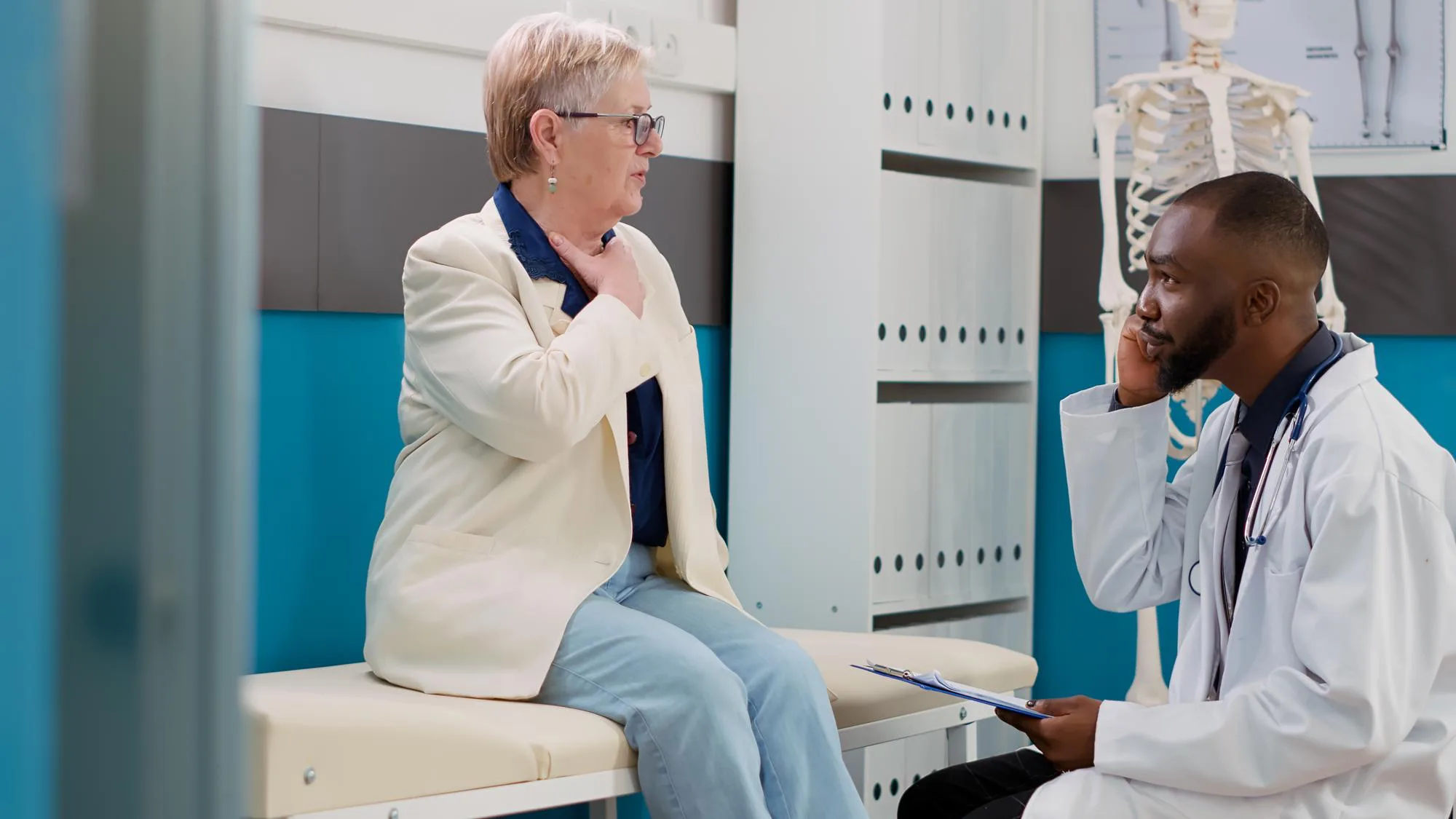
Chronic obstructive pulmonary disease (COPD) is a blanket term that describes a group of long-lasting diseases that slowly damage your lungs and make it difficult for you to breathe. COPD affects an estimated 12.5 million people in the United States and is the third-leading cause of death worldwide.
Smoking is the primary cause of COPD, though this condition may also develop after exposure to other chemicals and substances that can irritate and damage your lungs. Knowing more about COPD and what causes it can help you stay healthy and safe and may reduce your risk of developing this serious condition.
Symptoms of COPD
Symptoms of COPD can vary based on the cause and type of COPD. Emphysema and chronic bronchitis are the most common conditions that contribute to the development of COPD.
COPD symptoms include:
- Chronic cough
- Shortness of breath, even while doing typical everyday activities
- Coughing up phlegm or mucus
- Tightness in the chest
- Wheezing
- Fatigue or extreme tiredness
- Inability to take or difficulty taking deep breaths
- Feeling as though you cannot breathe
- Frequent lung infections, such as acute bronchitis or pneumonia
COPD Causes and Risk Factors
Smoking is the number-one cause of and risk factor for COPD. However, one in four people who are diagnosed with COPD report having never smoked. Other common causes and risk factors of COPD include:
- Long-term and/or frequent exposure to chemicals, dust, and fumes, particularly in the workplace
- Long-term exposure to air pollution, such as that emitted by vehicles, factories, power plants, and wildfires
- A history of respiratory infections that occurred during childhood
- A history of asthma
- Exposure to secondhand smoke
- Alpha-1 antitrypsin (AATD) deficiency (Alpha-1 is a protein that protects your lungs; AATD deficiency is a genetic condition that prevents your body from making enough of this protein)
Diagnosing COPD
If you’re experiencing symptoms of COPD or having difficulty breathing, your doctor may review your medical history, perform an exam, and run a series of tests to help determine whether you have COPD. Tests your doctor may perform to diagnose COPD include:
- Spirometry, which involves the use of an instrument called a spirometer that measures the amount and speed of the air you blow out
- Chest X-rays
- CT scans, which may help your doctor determine the type of COPD you have
- Oximetry, which can measure the amount of oxygen in your blood and reveal more about your lung functioning
- Alpha-1 tests, which can show whether your body doesn’t make enough of this protein
- Walk tests, which usually involve having you walk on a treadmill for about six minutes so your doctor can evaluate symptoms of shortness of breath
Treatments for COPD
There is no cure for COPD at this time. Instead, the goal of treatment is to reduce or improve your symptoms and help you live more comfortably. Common treatments for COPD include:
- Smoking cessation. Continuing to smoke if you have COPD can lead to further lung damage and decreased lung functioning. If you smoke, your doctor may recommend smoking-cessation treatments like medications or nicotine replacement that can help you quit.
- Medications. Symptoms of COPD can be treated with numerous medications, such as bronchodilators that loosen the muscles in your airways or corticosteroids that may reduce inflammation in your airways. Your doctor can talk to you about various medications for COPD based on your symptoms.
- Pulmonary rehabilitation. These rehab programs show you exercises and techniques you can use to improve your lung functioning and reduce your symptoms.
- Oxygen therapy. Supplemental oxygen may help you breathe more easily.
- Lung surgery. Surgery for COPD usually involves removing parts of the lung that are damaged or that are making it difficult for you to breathe. You may be a candidate for lung surgery if you do not smoke, are strong enough to have surgery and recover from it, and are willing to join a pulmonary rehabilitation program.
Tips for Living With COPD
If you’re living with COPD, the following behaviors could help make you feel better and improve your quality of life.
- Exercise daily. Exercise may improve your lung capacity and lung health and give you more energy. Your doctor can recommend the amount of exercise that’s safe to do based on your overall health and the severity of your COPD.
- Improve your nutrition. Certain foods and nutrients can improve your lung health and help you breathe better. Increase your intake of whole, healthy foods, including whole grains, fruits, vegetables, fish, and beans.
- Keep your home clean. Dust, pollen, and various other substances you breathe in may worsen COPD symptoms. Clean your home regularly to ensure the air you’re breathing is clean.
- Manage stress. Living with COPD can be stressful at times. However, chronic stress can worsen many health conditions, including COPD. Look for new ways to relieve stress, and consider joining a COPD support group to connect with others who understand what you’re going through.
- Ask for help. Sometimes, everyday tasks such as cooking, cleaning, and bathing can be difficult or overwhelming when you’re living with COPD. Ask for help from your friends and family, or consider hiring a caregiver who can assist you with daily activities.
Consult with your doctor if you think you may have COPD, or if you need help managing COPD. Your doctor can work with you to find solutions that may improve your symptoms and quality of life.
Resource Links
- “Learn About COPD” via American Lung Association
- “Chronic obstructive pulmonary disease (COPD)” via World Health Organization
- “Nutrition and COPD” via American Lung Association

